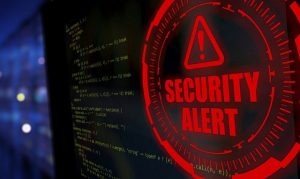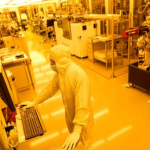Quantum News Briefs October 3: Infleqtion names Dr. Marco Palumbo as Director of Business Development in the United Kingdom; MIT’s new fluxonium qubit circuit enables quantum operations with unprecedented accuracy;

Quantum News Briefs October 3:
Infleqtion names Dr. Marco Palumbo as Director of Business Development in the United Kingdom

Infleqtion announced the appointment of Dr. Marco Palumbo to Director of Business Development, UK on October 2. Quantum News Briefs summarizes the announcement.
Dr. Palumbo joins Infleqtion from Innovate UK, a non-departmental funding delivery agency of the British Government, where he served as Innovation Lead in the Quantum Technologies Challenge team, a unit responsible for more than £200m of investment in the quantum industry in the United Kingdom (UK) to date.
Based in Infleqtion’s Oxford office, Dr. Palumbo will identify strategic opportunities to expand Infleqtion’s market presence in the UK and collaborate with potential partners in the emerging quantum technology ecosystem. He will also develop and launch the next evolution of Infleqtion’s growth strategy and foster relationships with potential customers across both public and private industries.
Dr. Palumbo served as the Principal Licensing and Ventures Manager at Oxford University Innovation. There, he managed an extensive portfolio of intellectual properties and was instrumental in the creation of 12 different university spinouts. Notably, he was instrumental in the creation of Oxford Quantum Circuits, Quantum Motion Technologies, Oxford Ionics, Orca Computing, Quantum Dice and QuantrolOx, all core companies in the British and international quantum ecosystems. Dr. Palumbo holds a bachelor’s degree in materials engineering from the University of Salento, and a doctorate in engineering from the University of Durham. He held postdoctoral positions at the University of Durham, the University of Salento and the University of Surrey.
“This is a time of rapid growth and development for both Infleqtion and the broader quantum industry,” said Dr. Marco Palumbo, Director of Business Development, Infleqtion UK. “We’re on the cusp of true quantum adoption, and I look forward to leveraging my passion and experience to help Infleqtion shape the future of quantum technology.” Click here to read the complete announcement.
MIT’s new fluxonium qubit circuit enables quantum operations with unprecedented accuracy
 MIT scientists demonstrated a novel superconducting qubit architecture that can perform operations between qubits — the building blocks of a quantum computer — with much greater accuracy than scientists have previously been able to achieve, as per an October 2 ScienceDaily article summarized here by Quantum News Briefs.
MIT scientists demonstrated a novel superconducting qubit architecture that can perform operations between qubits — the building blocks of a quantum computer — with much greater accuracy than scientists have previously been able to achieve, as per an October 2 ScienceDaily article summarized here by Quantum News Briefs.
MIT researchers are utilizing a relatively new type of superconducting qubit, known as fluxonium, which can have a lifespan that is much longer than more commonly used superconducting qubits. Their architecture involves a special coupling element between two fluxonium qubits that enables them to perform logical operations, known as gates, in a highly accurate manner. It suppresses a type of unwanted background interaction that can introduce errors into quantum operations.
This approach enabled two-qubit gates that exceeded 99.9 percent accuracy and single-qubit gates with 99.99 percent accuracy. In addition, the researchers implemented this architecture on a chip using an extensible fabrication process.
“Building a large-scale quantum computer starts with robust qubits and gates. We showed a highly promising two-qubit system and laid out its many advantages for scaling. Our next step is to increase the number of qubits,” says Leon Ding PhD ’23, who was a physics graduate student in the Engineering Quantum Systems (EQuS) group and is the lead author of a paper on this architecture.
For more than a decade, researchers have primarily used transmon qubits in their efforts to build quantum computers. Another type of superconducting qubit, known as a fluxonium qubit, originated more recently. Fluxonium qubits have been shown to have longer lifespans, or coherence times, than transmon qubits. Click here to read the SciTechDaily article in-entirety.
Researchers advance effort to turn diamonds into a quantum simulator

Kater Murch, the Charles M. Hohenberg Professor of Physics, and Ph.D. students Guanghui He, Ruotian (Reginald) Gong and Zhongyuan Liu in Arts & Sciences at Washington University in St. Louis have taken a major step forward in a quest to turn diamonds into a quantum simulator. Quantum News Briefs summarizes the October 2 article in Phys.org.
Co-authors of the recent paper include Kater Murch, the Charles M. Hohenberg Professor of Physics, and Ph.D. students Guanghui He, Ruotian (Reginald) Gong and Zhongyuan Liu. Their work is supported in part by the Center for Quantum Leaps, a signature initiative of the Arts & Sciences strategic plan that aims to apply quantum insights and technologies to physics, biomedical and life sciences, drug discovery and other far-reaching fields.
The researchers transformed diamonds by bombarding them with nitrogen atoms. Some of those nitrogen atoms dislodge carbon atoms, creating flaws in an otherwise perfect crystal. The resulting gaps are filled with electrons that have their own spin and magnetism, quantum properties that can be measured and manipulated for a wide range of applications.
As Zu and his team previously revealed through a study of boron, such flaws could potentially be used as quantum sensors that respond to their environment and to each other. In the new study, the researchers focused on another possibility: using imperfect crystals to study the incredibly complicated quantum world.”We carefully engineer our quantum system to create a simulation program and let it run,” Zu said. “In the end, we observe the results. It’s something that would be almost impossible to solve using a classical computer.”
The team’s progress in this area will enable the investigation of some of the most exciting facets of many-body quantum physics, including the realization of novel phases of matter and the prediction of emergent phenomena from complex quantum systems.
In the latest study, Zu and his team were able to keep their system stable for up to up to 10 milliseconds, a long stretch of time in the quantum world. Remarkably, unlike other quantum simulation systems that operate at ultra-cold temperatures, their diamond-built system runs at room temperature.
The new diamond-based system allows physicists to study interactions of multiple quantum regions at once. It also opens up the possibility for increasingly sensitive quantum sensors. “The longer a quantum system lives, the greater the sensitivity,” Zu said. Click here to read the October 2 Phys.org article in-entirety.
The quantum threat to IoT & ICSs
Skip Sanzer, founder, board chair and COO of QuSecure describes the quantum threat to cyber-physical systems (CPSs)that the Internet of Things (IoT) and Industrial Control Systems (ICSs) in his September 25 Forbes article. Quantum News Briefs summarizes.
The Internet of Things (IOT) such as ultra-small and focused devices also includes sensors, security devices, video cameras, medical devices and more. Since they’re connected to the internet, IoT devices can be managed and controlled from anywhere in the world. According to Statista, by 2030, there will be around 29 billion IOT devices,
Similar to IoT devices, industrial control systems (ICSs) run almost every digitized industrial operation, including manufacturing and critical infrastructure like energy grids. ICSs comprise the devices, systems, networks and controls used to operate and/or automate industrial processes and, in many cases like IoT, are connected to the internet.
Gartner Inc. provides a broader definition it calls cyber-physical systems (CPSs). CPSs include IoT and ICSs, as they interact with the physical world (including humans).CPSs are connected to the internet or to a network as well as to each of these devices and the data they process, and transfer could be accessed from anywhere in the world by hackers. Additionally, due to their smaller sizes and form factors, CPSs do not have the CPU power and storage capacity to house robust cybersecurity defenses, so they are more vulnerable to cyberattacks.
Quantum computers pose an even greater threat to CPSs due to their potential to break currently used public key cryptographic systems:
• Breaking encryption algorithms.
• Man-in-the-middle attacks.
• Data integrity.
• Data privacy.
• Steal now, decrypt later.
NIST recommends that organizations switch to quantum-resistant cryptographic algorithms. These algorithms are designed to be secure against both quantum and classical computer attacks and would help future-proof CPSs. Companies can take several steps to prepare for potential quantum computing attacks on CPSs:
• Stay informed.
• Quantum-resistant algorithms for CPSs.
• Risk assessment.
• Test cryptographic agility on CPS communications.
• Vendor management.
Sanzeri concludes “Preparing for quantum computing attacks now can help organizations maintain the security and privacy of their CPS devices in the future.” Click here to read the complete article.
Sandra K. Helsel, Ph.D. has been researching and reporting on frontier technologies since 1990. She has her Ph.D. from the University of Arizona.




















